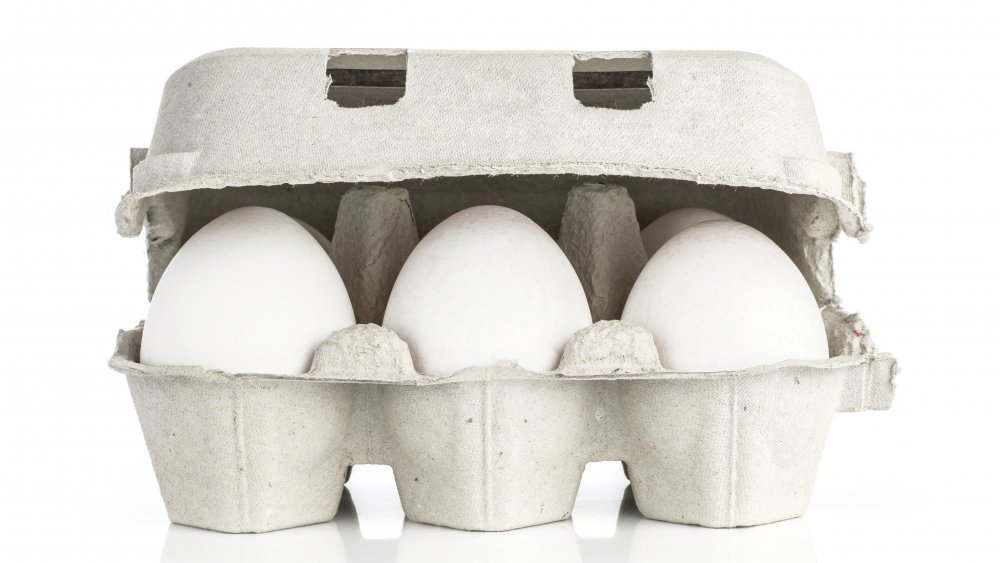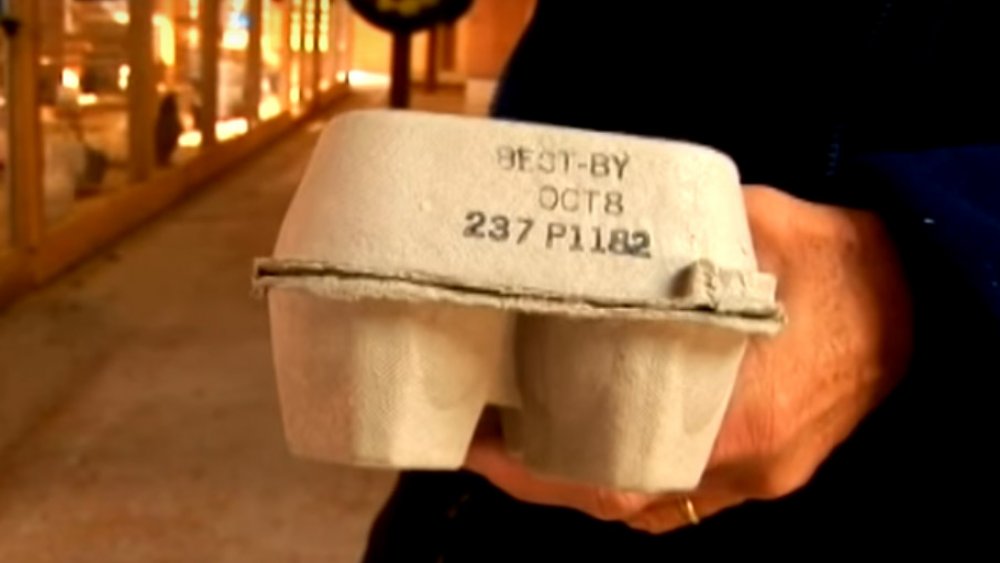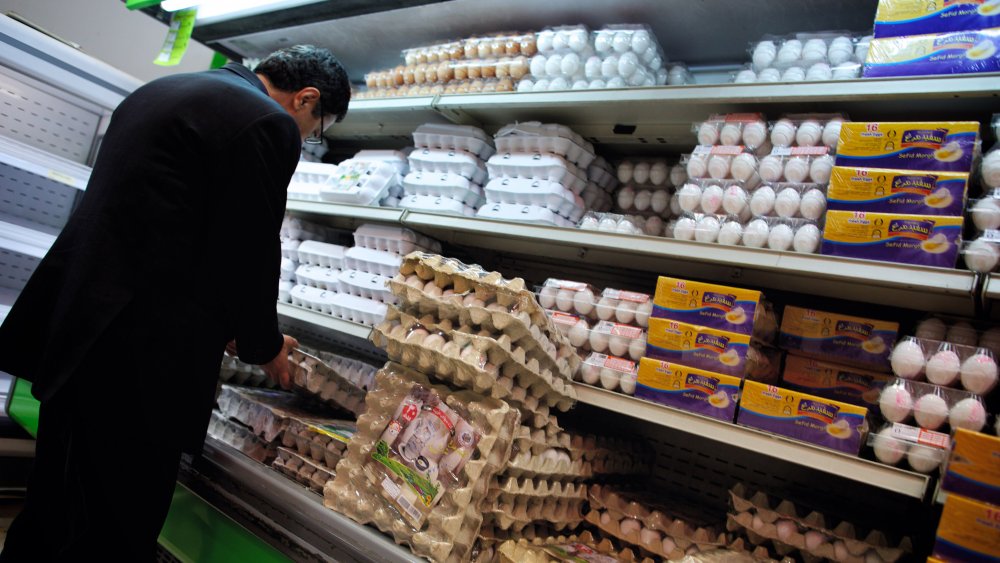Here's What Those Numbers On Your Egg Carton Really Mean
There's certainly no shortage of eggs to choose from in the grocery store aisle, and while there's a definite variety ranging from white and brown eggs to organic and free-range, they all have one thing in common — that numbering on the side of the carton. Go look at the egg carton sitting in your fridge right now and you'll find that there's definitely some code of numbers on the side.
Part of these numbers, of course, refer to the "best used by" date of the eggs. You'll also notice, though, that there are some additional numbers on the carton. These mysterious numbers aren't there just by accident, and they serve a very practical purpose that may just change how you go about deciding which carton of eggs land in your grocery cart.
Understanding the packaging code on egg cartons
Checking the "best by" date on your carton of eggs is a good way of ensuring that you pick up a fresh carton, but it's not the only way to tell. Next time you're in the grocery store, check out an egg carton and you'll notice some additional numbers below or on top of the "best by" date. This three-digit sequence refers to the specific date that your eggs were packaged (via Insider).
The numbers should be somewhere between 001 to 365, and refer to the specific day in the 365 calendar year that your eggs were harvested. January 1 would be 001 and December 31 would obviously be 365. Pretty simple, right? Things do get slightly tricky if it happens to be a leap year. For example, eggs packaged on March 1 during a regular year would have the code 060, but if it's a leap year that code is thrown off and now would be... you guessed it, 061 because of that extra day in February. It's not a big difference, of course, but something to keep in mind if you're determined to get the absolute freshest eggs possible.
What about those other codes found on egg cartons?
You might notice some other odd code on your egg carton besides the "best by" and package dates. This isn't some secret code — it's actually put in place by the United States Department of Agriculture as a form of transparency for the consumer. The code simply refers to the processing plant that packaged the eggs (via Cooking Light). The code usually starts with "P" in reference to the plant, and then a series of four numbers for the plant's ID. If you're really curious about where your eggs were processed, the USDA has a guide for egg processing reference.
If there has been egg recall from a particular processing plant, you can look at your eggs and determine if they need to be tossed out or are safe to keep and consume. Most of us probably aren't going to check out the credentials of a processing plant every time we buy a carton of eggs, but it's worth knowing what that code means should you need to. Nobody wants a side of food-borne illness with their omelet.
Checking out the packaging code could result in a better tasting egg
The reason these codes are on the egg carton, to begin with, is because an egg's shell is far from some invincible force field, and as the days of the month roll by, that egg starts to go downhill (via Taste of Home). The egg begins to lose moisture, and if you bought a carton of eggs on December 1 that has the packaging date of 306, well, your yolks might not taste so "eggcellent."
The "best by" date is certainly a suitable way to check your eggs' freshness, but it's worth looking at that three-digit harvesting code as well. Refrigerated eggs are good for up to five weeks after being packaged, and can be sold for up to 30 days after they've been processed, but who really wants to buy eggs that are already a month old?
Taking a few extra seconds to look at that egg code and then figure out where it falls on the calendar might seem like more trouble than it's worth, but it could really pay off with you having a fresher tasting breakfast. What's that? You don't have the Julian calendar memorized? Not to worry. The USDA offers consumers an egg stamp pocket guide that you can download and keep on your phone for grocery shopping reference. Now you really have no excuse not to check that packing code date. Plus,you'll have some extra peace of mind that your eggs are safe and ready to be scrambled, fried, or poached.



